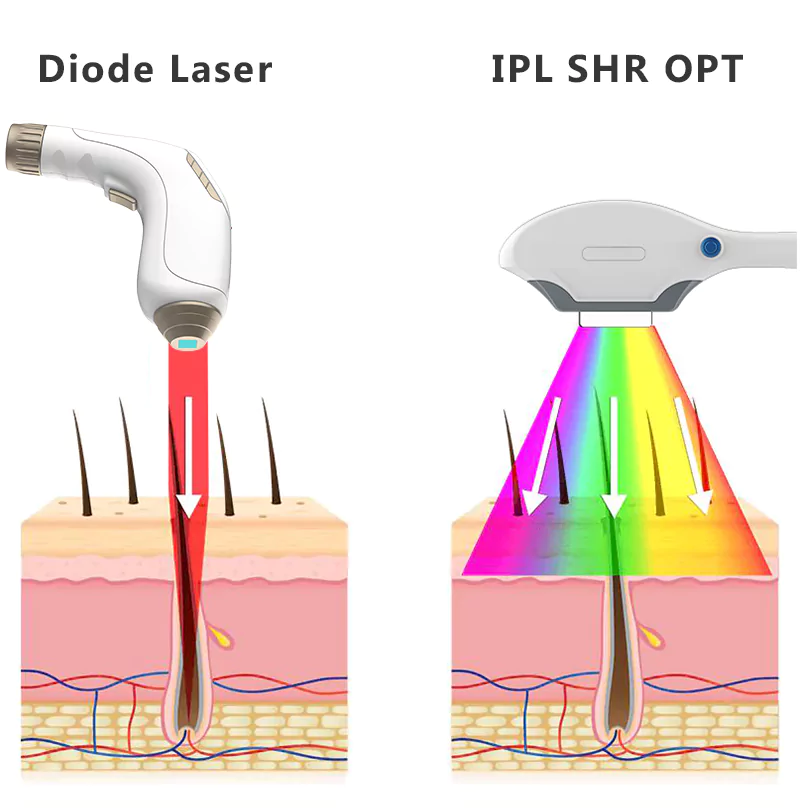The enigma of light generation in technology leads us to ponder: What exactly distinguishes a diode from a true laser? This query inspires excitement and invites exploration into the intricate world of photonics. While both types of light emission devices operate on fundamentally similar principles, their differences fundamentally impact their applications and efficiencies. A thorough investigation reveals that the distinction lies in the mechanisms of light generation and the resultant coherent properties of the emitted light.
At the core of our inquiry rests the concept of electromagnetic radiation. Specifically, within the visible spectrum, light can be classified based on various parameters, including coherence, monochromaticity, and directionality. To distinguish between a diode and a true laser, one must first grasp the essential behavior of photons—the elementary particles that constitute light.
The Basics: How Diodes Work
A light-emitting diode (LED) operates through electroluminescence, a phenomenon observed when an electric current passes through a semiconductor material. In essence, when electrons recombine with holes within the semiconductor, energy is released in the form of photons. This process occurs in a relatively random fashion, resulting in the emission of light that is typically diffuse and lacking coherence.
Perhaps the most notable characteristic of diodes is their spectral breadth. The emitted light spans a range of wavelengths, thus constituting a polychromatic output. This diversified light spectrum leads to lower intensity and less directivity, making LEDs ideal for general lighting applications, signaling, and display technologies.
The Nature of True Lasers
Contrasting with diodes, true lasers operate based on the phenomenon of stimulated emission—a process that inherently demands higher sophistication. In a laser, photons stimulate excited atoms or molecules to emit additional photons of the same wavelength and phase. This coherence is what grants lasers their characteristic properties: monochromatic output, high directional focus, and extraordinary intensity.
The quintessential component of any laser system is the gain medium, which can be gaseous, liquid, or solid. This medium is excited through an external energy source, often referred to as a pump. It is this pivotal role of the gain medium that engenders the unique attributes of laser light. Furthermore, the configuration of optical resonators within laser systems—typically constituted by mirrors—facilitates the amplification of light, culminating in a finely focused and coherent beam.
Coherence and Monochromaticity: A Comparison
Delving deeper into coherence provides further elucidation. In optical terms, coherence refers to the correlation of the phase of light waves. Diodes emit incoherent light, where the phase relationship of emitted photons is randomized. This randomness results in a quick decay of coherence over distance, rendering the light less effective for applications requiring precision, such as in laser welding or medical laser treatments.
In stark contrast, true lasers produce highly coherent light, where photons travel in unison, maintaining a constant phase relationship. This coherence underpins the functionality of lasers in applications necessitating high precision—such as fiber optics, cutting tools, and surgical devices—where accuracy is paramount.
The Divergence in Applications
Such glaring distinctions in light characteristics inevitably lead to divergent applications. LEDs shine brightly in environments requiring widespread illumination rather than precision. From automotive headlights to indicators on electronic devices, they serve robust and efficient roles across various technologies.
True lasers, on the other hand, find utility in specialized applications. For example, their precision laser-cutting capabilities facilitate intricate manufacturing processes in industries ranging from automotive to aerospace. Furthermore, the medical field harnesses the precision of lasers for surgical procedures, including delicate operations on the eyes or skin. The fine-tuned control and lack of thermal damage typically associated with lasers make them an invaluable tool in such sensitive contexts.
Energy Efficiency: A Comparative Analysis
In analyzing energy efficiency, both devices exhibit unique spectrums of performance. LEDs are notoriously energy-efficient, converting a significant portion of electrical energy into visible light with minimal waste. The long lifespan of LEDs adds to their appeal, providing considerable longevity and reduced maintenance costs relative to alternatives.
While true lasers may not operate with the energy efficiency of LEDs, they yield unparalleled power and precision outputs that enable them to accomplish tasks beyond the reach of other light sources. The energy expenditure in lasers is judiciously justified when considering the applications they facilitate, despite their need for a more complex set-up and multidisciplinary technologies.
Conclusion: The Intriguing Interface of Light Technologies
As our exploration draws to a close, we return to the initial challenge: can a simple inquiry unravel the complexities of modern light-generation technology? The world of diodes and true lasers is an intriguing study in contrast. Diodes, with their versatility and efficiency, cater to ubiquitous lighting needs, while lasers, endowed with coherence and intensity, dominate specialized domains demanding precision. This distinction not only shapes the landscape of lighting technology but also defines the innovative trajectories of countless applications across industries.
Thus, contemplating the difference between a diode and a true laser beckons further questions: What future advancements will emerge as these technologies evolve? What new applications will exploit their distinct attributes? The vibrant interplay of light and technology will undoubtedly continue to illuminate our pathways forward.












